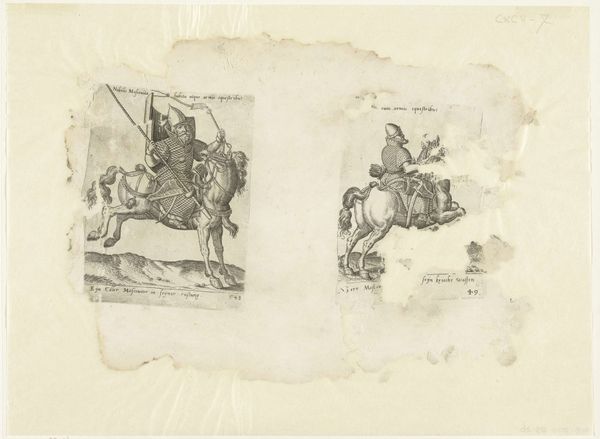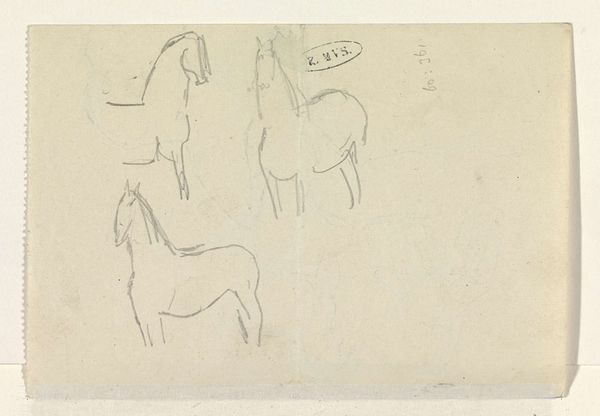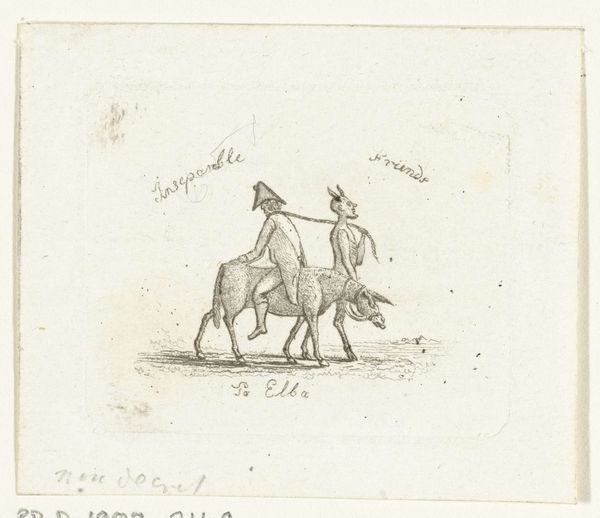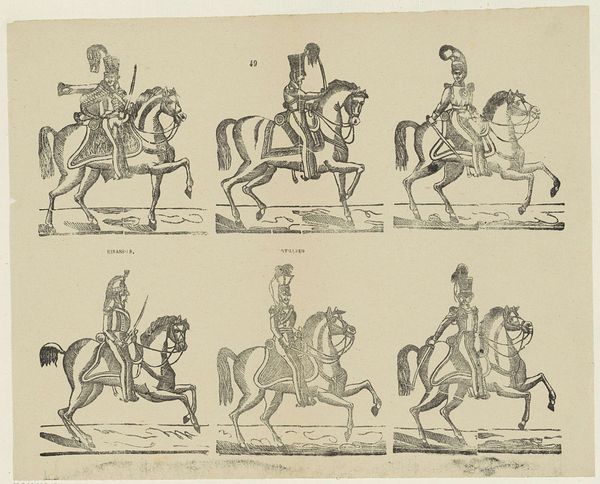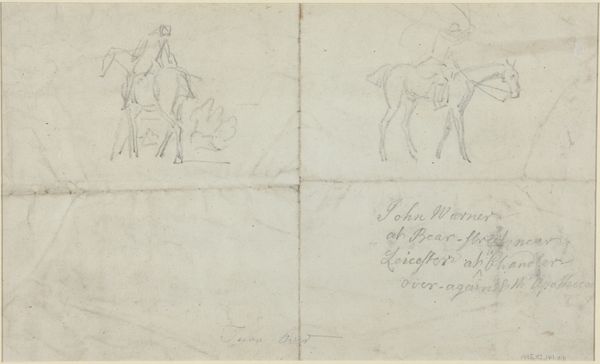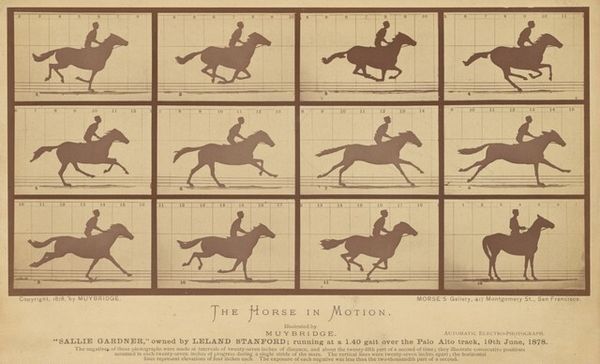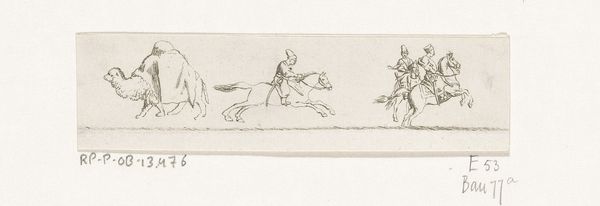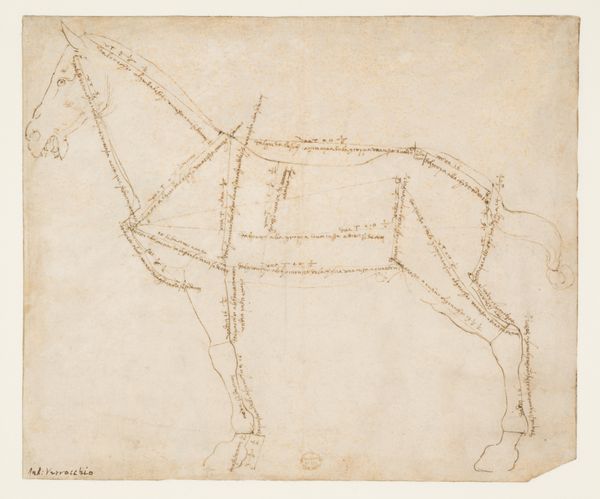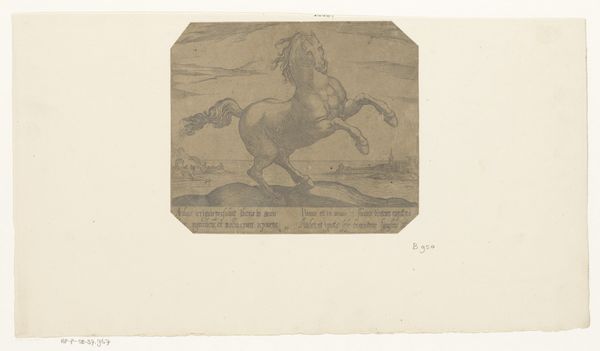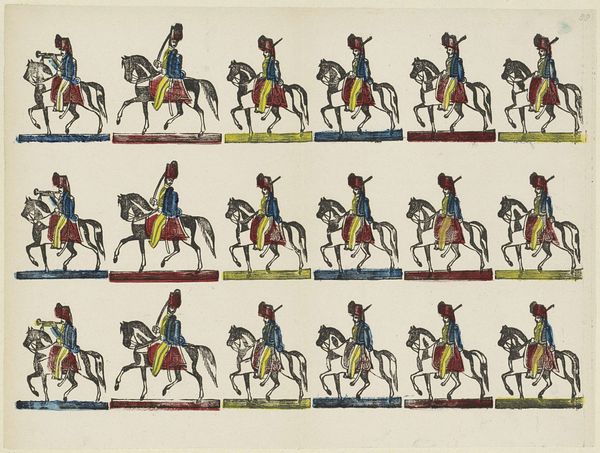
drawing, paper, ink
#
drawing
#
blue ink drawing
#
narrative-art
#
paper
#
ink
#
academic-art
Dimensions: height 140 mm, width 208 mm
Copyright: Rijks Museum: Open Domain
Curator: Here we have a drawing titled "Mahomet," made around 1890 by Willem Constantijn Staring. It’s rendered in ink on paper. Editor: My initial reaction? It feels almost like an instructional diagram. Not immediately what I’d think of as "art" in the traditional sense. It looks very precise. Curator: That’s astute. It belongs to the academic art style, focusing on careful observation and rendering. Notice the numbers above each horse. Staring likely aimed to dissect the movement, probably reflecting emerging interests in chronophotography or early motion studies. Editor: I am intrigued by the medium, ink. It seems almost functional. I wonder about the social context—was this intended for personal study? Were these skills to be transferred? Who might consume the imagery in this manner? The marks seem deliberate, studied. Was the paper specifically prepared or was it a functional support material? Curator: Those are crucial questions. Staring came from an established family involved in land management. Academic art often served purposes beyond aesthetics, communicating information about the world. Here, understanding the horse's gait could have practical implications for breeding or training and would definitely mark the upper classes in that period. The scientific elements merge art and craft traditions that are often separated in Art History. Editor: It blurs the line. The "craft" of horse management alongside this meticulous almost scientific mode of seeing. There's this pursuit of precision, likely linked to particular class needs and maybe wider aspirations of industry. It adds this tension of both the objective gaze and its subjective impact in terms of societal control and labor management, possibly. Curator: Precisely. And this connects directly to Staring's own position within that socio-economic hierarchy. The creation and study of such work reflected a social and intellectual posture of control, class division, and aspiration, even. Editor: Makes you think about what's considered "art" and who defines that. This piece questions those traditional boundaries in very interesting ways, connecting craft to technology and social standing. Curator: I agree; the work complicates ideas about what qualifies, highlighting social structures that define how we produce and interpret art. It pushes beyond surface-level meaning and makes us see that class division are reproduced and validated via visuals and scientific techniques.
Comments
No comments
Be the first to comment and join the conversation on the ultimate creative platform.

